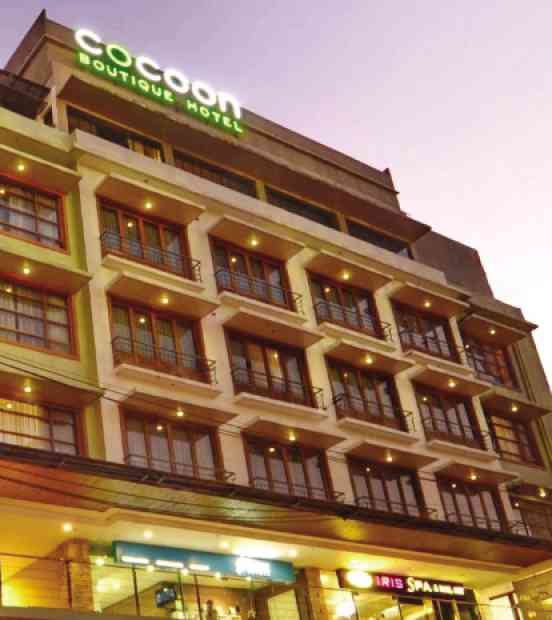
You are what you host. For an environment-friendly hotel, at least, this could be the motto.
In the last three years, several press conferences and events pertaining to the environment have been held in two boutique hotels in Quezon City, namely Cocoon and its sister hotel Hive.
In October 2013, Cocoon Hotel hosted one of the country’s biggest environment-related events, the Healthcare Without Harm-Asia regional conference, with several global environment experts billeted here. The conference discussed sustainability issues affecting Philippine hospital workers’ best environmental practices. The hotel menu, of course, offered predominantly vegetarian fare.
On March 19, Hive Hotel hosted a special dinner event observing Earth Hour.
Although both Cocoon and Hive hotels have yet to improve their options for world-class vegan food to make them completely environmentally sustainable hotels, the two hotels feature numerous eco-friendly facilities and amenities. Hive Hotel is registered with the US Green Building Council and is Leadership in Energy and Environmental Design (LEED)-registered, and is currently targeting to be the first LEED-certified new construction in the Philippine hotel industry. For its part, Cocoon, which received the Trip Advisor’s Travellers’ Choice Award for 2016, is also pursuing its LEED-Environment Design certification.
Inquirer Property visited Hive and Cocoon Hotels, and counted up to 36 green features. These are:
For Hive:
- Rain and groundwater harvesting in a big capacity cistern for toilet flushing, plant irrigation and general house cleaning
- Dual piping system to separate gray and potable water
- Water-saving fixtures like faucets with aerators, and low-flow “Water Sense” certified water closets
- Use of Photovoltaic Solar System that powers 60 percent of the rooms
- Skylight at the ballroom; glass blocks at the stairwell and pantries for natural lighting
- Use of energy-efficient lighting fixtures and appliances, such as LED lights, LED TV, inverter-type air-conditioning, and absorption-type minibar ref
- Use of energy recovery ventilators
- Use of recovered chilled water from air-conditioning condensation to cool the al-fresco and kitchen areas, and to water the plants
- Use of reclaimed wood and other renewable building materials
- Cool building envelope through use of terracotta wall cladding and low-E glass windows
- Recycled or upcycled construction scraps MDF, acoustic panel boards, translucent panels for room and public areas accessories
- Bulk dispensers for certified organic bathroom amenities
For Cocoon:
- Rain and groundwater harvesting for toilet flushing, plant irrigation and general house cleaning
- 100-percent use of LED lighting
- Reclaimed all wood, metal roofing and steel grills of demolished structure on site
- Use of reclaimed materials for the construction process and reuse to form part of the structure
- Passive cooling through building orientation
- Use of insulation on metal roofing
- Use of reclaimed wood in the lobby
- Use of natural and renewable materials such as woodstone
- Installation of used lighting fixtures
- Front stairwell has natural lighting and ventilation
- Use of indoor plants
- Inverter-type air-conditioning using non-ozone-damaging R410A refrigerant
- Art wall from individual scrap wood pieces
- Waste segregation program
- Linen reuse program
- Towels reuse program in bathrooms
- Eco-certified 100-percent organic bathroom amenities
- Toiletries using plasticized cornstarch material with packaging using stone paper and soy ink
- Dual piping system for separate gray and potable water
- Water-saving faucets with aerators and siphonic jet toilet flushing
- Use of Low-e laminated glass and insulated double-glazed glass for windows and doors in ballroom
- Use of eco-friendly cleaning materials throughout the hotel
- No smoking policy
36. The deck has urban edible organic roof garden grown through an eco-friendly system. This garden is completely free of any chemical pesticide and fertilizer. The project pushes for less carbon emissions since the garden is inside the city, thus eliminating the need for road travel to transport the vegetables from farm to table. It utilizes harvested rainwater in irrigating the plants. It started its 100-percent Vermicompost onsite; no harmful residue down the drain pipes which also goes into the sea. Fresh vegetables planted on site reduces the need for refrigeration of ingredients.

